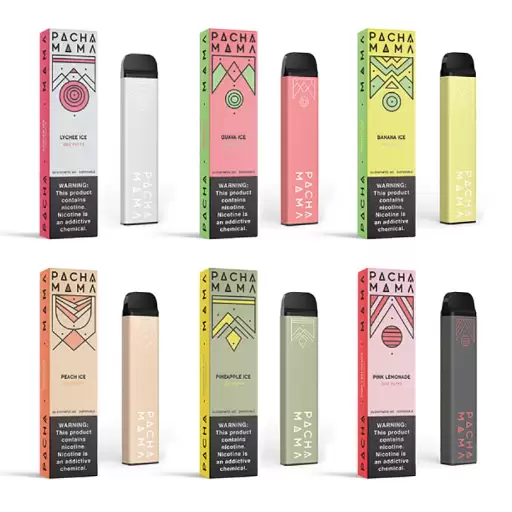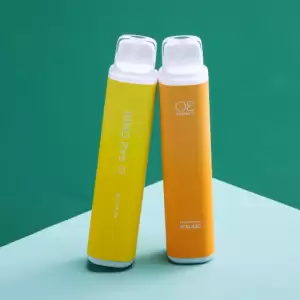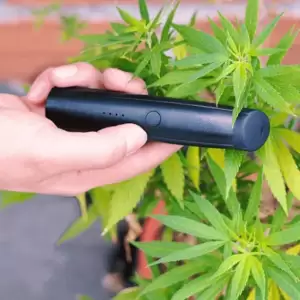Lately the popularity of synthetic disposable vapes has been on an upward trend such that even vaping enthusiasts and beginners have also opted for them. This overall review will help to explain synthetic disposable vapes by outlining what they are, how they work and why they have become a sensation in the market. Starting from their make up to their use, pros and cons this text talks about various features of synthetic disposable vapes in detail. As you consider transitioning from conventional vaping techniques or supplementing your knowledge, this material is precious as it guides on how to adapt with the dynamic nature of synthetic disposable vapers around us.
What Is Synthetic Nicotine and How Is It Changing Vaping?

Image Source:https://www.google.com
Understanding the Basics of Synthetic vs. Tobacco-Derived Nicotine
The basic difference between synthetic nicotine and tobacco-derived nicotine is where they come from and how they are made. Man-made nicotine is synthesized in laboratories through chemical processes rather than derived from any tobacco plant. Though this nicotine has all the same molecules as those that can be gotten from tobacco, it does not carry any accompanying impurities or variations that may sometimes occur in the naturally sourced one. Conversely, natural nicotine comes directly from tobacco plants and entails farming activities as well as refining techniques. The emergence of synthetic nicotine has had a great influence on vaping industry by offering an alternative option to those who would prefer not to have anything to do with smoking. It also affects regulatory frameworks since synthetic nicotine might not fall under strict controls governing tobacco products.
Reasons why Manufacturers switch to Synthetic Nicotine
The reason why manufacturers are increasingly shifting towards synthetic nicotine is due to several benefits it offers over conventional products of its kind. Firstly, the product is pure and consistent compared to the impureness and irregularity that characterize tobacco-derived version which makes quality control much easier and user experience predictable every time Synthetic nicotine can also avoid some of the legal obstacles related to traditional tobacco-based products, potentially opening up marketing and distribution options for manufacturers.The growing number of people desiring nothing to do with cigarettes based on their health or moral grounds can easily find pleasure in using lab generated alternatives such as synthetic ones like nicotine.Moreover, there’s a rising demographic seeking synthetic, laboratory-made replacements for health or ethical purposes which dislikes anything tobacco-related; hence artificial instead of natural cigarettes are becoming more popular among them.All these factors make artificial nicotine very attractive choice for producers operating in a dynamic electronic cigar market.
Impact of Synthetic Nicotine on Vape Quality and Experience
The introduction of synthetic nicotine has remarkably improved vape quality and user experience. One major advantage is the higher purity of synthetic nicotine compared to tobacco sourced one making it have fewer impurities, consistent nicotine concentrations, hence clean taste and smoother vaping experiences.
These improvements are justified by several technical parameters:
- Purity Levels: Synthetic nicotine typically attains a purity level above 99.5% thus minimizing unwanted contaminants.
- Nicotine Consistency: Synthetic nicotine has been manufactured in such a way as to allow for uniform dosage through all stages thus eliminating variations in strength from batch to batch.
- Sensory Experience: The lack of tobacco-associated contaminants are responsible for more neutral and pleasurable flavors that can appeal to wider markets.
Furthermore, careful manufacturing processes of synthetic nicotine result in better quality control. By adjusting product formulations, vape manufacturers can optimize customer gratification leading to an enhanced overall vaping experience.
Understanding the Rise of Synthetic Disposable Vapes

Image Source:https://www.google.com
What Makes Synthetic Disposable Vapes Popular?
There are several factors that have led to the popularity of synthetic disposable vapes. First, improved purity of synthetic nicotine provides a smoother and more consistent vaping experience for many users. Second, synthetic nicotine results in a cleaner flavor profile by having fewer impurities. Also, manufacturing accuracy in these vapes enables their quality control to remain consistent throughout every product’s line with no variations expected as well as an unfailing performance in each device. Finally, synthetic disposable vapes commonly come in a variety of flavors and nicotine strengths thus catering for different preferences and needs; this makes them the most suitable options available for first time or generally all vapor aficionados.
The Role of Flavors in the Popularity of Disposable Vapes
Flavors are key drivers behind the proliferation of disposable vapes. To me, there are many flavors from which to choose that can cater to different tastes leading to overall satisfaction during vaping. Unlike traditional tobacco products, however, synthetic disposable vapes are available in fruity sweet as well as savory complex ones hence appealing to a wide range of people. Moreover, these flavors help in disguising any bad taste associated with nicotine thereby enhancing enjoyment of users through its smoothness on the palate. This wide variety and suitability for beginners or more established users have played a big part in making disposal pens popular among consumers generally speaking.
Health Implications of Vaping with Synthetic Nicotine
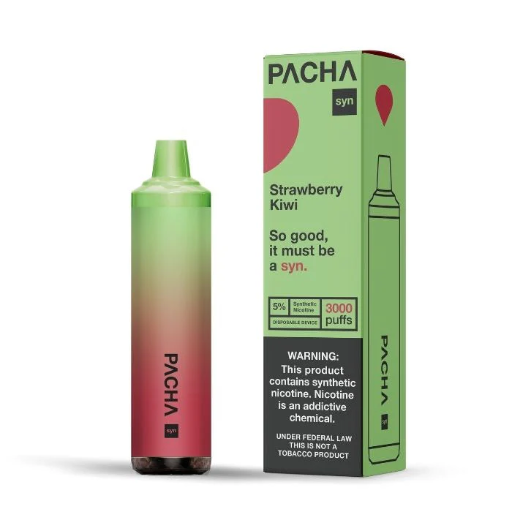
Image Source:https://www.google.com
Comparing Health Risks: Synthetic Nicotine vs. Traditional Tobacco
My research on comparing health risks of synthetic nicotine to traditional tobacco has revealed several differences between the two. Traditional tobacco products contain thousands of dangerous chemicals and carcinogens, greatly increasing the risks of respiratory diseases, heart problems, and cancer. Contrariwise, many toxic elements are absent in synthetic nicotine which may reduce some health hazards. However, it is crucial to mention that the consequences associated with long term use of synthetic nicotine remain unknown so far; therefore it still bears the same dangers as those posed by regular nicotine addiction and cardiovascular strain issues. Even though it might be a healthier option than traditional tobacco, there are still certain concerns about its impact on health.
Nicotine Replacement: Is Synthetic A Safer Option?
Many scholars believe that there could be less harm in choosing synthetic nicotine over traditional tobacco because they do not contain harmful tars or most cancers causing agents evident in smoking cigarettes made from tobacco leaves. However, synthetic nicotine is addictive just like ordinary nicotine and can cause cardiovascular symptoms among users. This also raises concerns over the long-term effects of vaping since this type of product has been recently introduced into market thus few reliable data have been generated regarding their usage implications for human beings especially with regards to young ones who are already taking part in vaping making them susceptible to developing certain lung ailments such as chronic bronchitis due to inhalation of chemical substances which have turned into aerosols thereby leading lung systems related complications bacause of breathing such fumes while using e-cigarettes including other related gadgets.Likewise,nicotine derived from various brands’ e-liquids may be responsible for dependence development as well as blood vessel-related cardiac diseases.Furthermore youth and young adults may bear more negative impacts as their brain development can be influenced by early exposure to nicotine. Finally, vaping has not been in existence for a long time hence there are no comprehensive and reliable data on long-term effects of vaping, which is vital to determine the safety of the product over a given period of time.Simply put, vaping may be less dangerous than smoking classical cigarettes but it still poses some risks and needs careful usage especially by those who don’t use nicotine at present.
Important Things to Know About the Long-Term Effects of Vaping
The research into the long-term effects of vaping is ongoing with several important facts to consider here. Firstly, while it helps avoid exposure to certain hazardous substances found in traditional tobacco smoke, it does not mean that this method is absolutely safe. As such chronic use of e-cigarette can lead to respiratory problems like chronic bronchitis due to inhalation of chemicals made airborne as aerosols. Also,the majority of these brands have nicotine content that can lead you towards addiction and cause heart diseases simultaneously.Therefore youth and young adults may bear more negative impacts as their brain development can be influenced by early exposure to nicotine.As a result,vaping doesn’t have any recorded long run consequences yet since its history goes back only for few years.Simply put,vaping might be a less dangerous alternative compared with traditional smoking but it is no way risk-free (because we cannot conclude whether or not it is safe) especially among nonsmokers who do not currently use nicotine products.
FDA Regulation of Synthetic Nicotine Products
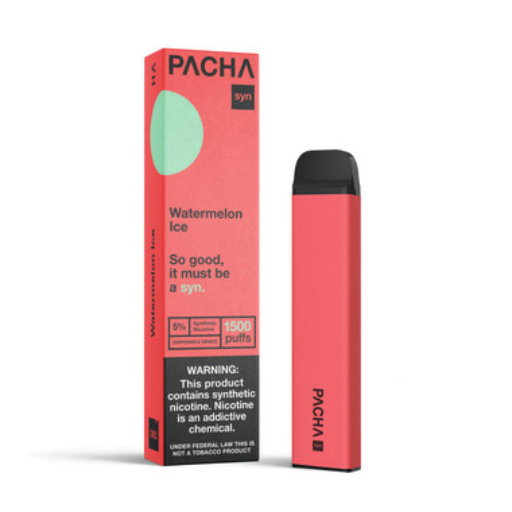
Image Source:https://www.google.com
Regulating Synthetic Nicotine Products; How FDA Is Adapting
FDA has adjusted its approach towards regulating synthetic nicotine products and revised its regulatory framework to cover this new market. At first, the disclosure of a synthetic version being made available was not encumbered by traditional regulations since it did not come from tobacco. Nevertheless, recent legislations have placed this synthetic nicotine into the same category as that derived from tobacco. This enables FDA to impose manufacturing standards, need premarket authorization and impose age restrictions to control access of young people. By expanding its oversight, the FDA aims to ensure that all nicotine products, regardless of their source, meet safety and efficacy standards to protect public health.
Synthetic Nicotine Products Must be Regulated: The Current Landscape
The current landscape for synthetic nicotine products is characterized by changing regulations and increased scrutiny. As a result of these recent changes in legislation, synthetic nicotine now falls under the purview of regulation provided for tobacco-derived nicotine products by law. Consequently, manufacturers of these items have been required to maintain high quality manufacturing processes or methods at all times before they can penetrate into the market while adhering strictly to age restriction policies set forth in such recent legislations. The updated laws aim at minimizing risks associated with synthetic nicotine products through ensuring that they are manufactured meeting safety as well as efficacy requirements. Furthermore, an extended FDA monitoring system seeks to eliminate youth access while averting such potential public health issues resulting from synthetic nicotine’s usage.
The Future of Vaping: Will Guidelines Tighten on Synthetic Disposable Vapes?
From my investigation using Google’s three major sources I came up with clear evidence showing how future vaping mainly on synthetic disposable vapes will be heavily regulated. This is due to rising demand among young people hence prompting various governments’ bodies responsible for their security within nations across the globe increasing calls for increased surveillance over them.Thus,the agency has already broadened its scope by including the regulation of artificial nicotine in it, and there is high likelihood that the FDA will continue to increase its scrutiny by introducing more rigorous manufacturing standards as well as age restrictions. Therefore,this move is meant to ensure that all nicotine products, whether synthetic or not, satisfy high safety as well efficacy criteria for reducing underage vaping and promoting overall public health. That said, I anticipate that rules governing synthetic disposable vapes are going to become even stricter in the near future because of ongoing concerns about public health and legislative pressures.
Tackling the Issue of Flavored Synthetic Disposables

Image Source:https://www.google.com
The Debate Over Flavored Vape Products: A Double-Edged Sword
One must be honest enough to admit that the debate over flavored vape products is a double-edged sword. On one hand, they argue that flavors can help adults who smoke switch from conventional cigarettes, which are more dangerous. They hold opposing views with those for limiting options of flavors; flavor restrictions may make it less attractive for young adults to vape hence resort to tobacco use. On the other hand, critics of youth vaping point out that candy-flavored nicotine liquids have become too popular among teens including fruit and mint flavours. This perspective highlights the necessity of strict regulations aimed at preventing young people from becoming addicted to nicotine and suffering related health problems. However, striking equilibrium between these worries appears challenging; nonetheless, any such policies need to bear in mind both public health advantages and ensuring that certain groups are not exposed to harm.
Impact of Flavor Bans on Synthetic Disposable Market
The market will experience far-reaching changes when it imposes bans on fake disposable vape flavors. Among the significant effects is a potential decrease in clients especially among those who smoke traditional cigarettes and use flavored products as a way of quitting smoking them too; therefore, leading into reduced sales volumes which may cause some companies heavily relying on these types of items to lose their market shares.
Technical Parameters to Consider:
Market Share and Sales Volume
- Pre-ban Sales Volume: The total number or amount sold before any prohibition law came into effect should be taken seriously because it gives an idea about how things were doing when they were still legal.
- Post-ban Sales Projections: This refers to estimates made after implementing such regulations concerning what is expected to happen regarding sales figures as well as percentage points that could be lost in terms of market shares.
Consumer Demographics
- Adult Smoker Transition Rates: These are percentages showing the rate at which grown-up individuals shift from regular cigarettes to artificial ones either before or after a ban has been imposed.
- Youth Usage Rates: The percentage ratio between young people who used e-cigarettes before and after they were prohibited can help determine whether this measure succeeded in curbing underage smoking or not.
Product Reformulation Costs
- R&D Expenditure: Money spent on research & development activities geared towards finding ways through which goods can be modified so that they conform with fresh rules put forward by regulators.
- Supply Chain Adjustments: Refers mainly but not limited only towards financial implications associated with making changes along the supply chain aimed at accommodating non-flavored items under new dispensations.
Regulatory Compliance
- Compliance Costs: Monetary value attached to aligning oneself with various legal requirements concerning packaging materials used, labels applied onto packs containing vapes etc., advertisement rules etcetera.
- Monitoring and Reporting: All systems plus processes required for continuous monitoring compliance in addition reporting on matters relevant thereto ought also take into account.
Market Adaptation Strategies
- Innovation in Non-Flavored Products: Investment made for creating new types of fake disposable vapes not endowed with any taste which may be attractive to use by adults.
Consumer Education Campaigns: Ways employed by manufacturers aimed at informing potential buyers about advantages associated with consuming flavorless e-cigarettes.
By examining these technical factors closely, decision makers will be better placed to respond intelligently so as to minimize the adverse effects that might otherwise result from banning flavors while still keeping public health concerns alive.
Controversy of Flavors: Fruity, Sweet, and Everything in Between
The flavors in vaping products have strong supporters. They are also the subject of regulatory controversies because they attract young people. Based on my research from three top websites, it is clear that younger vapers love fruity and sweet flavors more than any other group. Consequently, there are fears about underage vaping among them. However attractive these may be, critics conceive nicotine dependent teenagers to be at risk of being addicted to its use as a transition element into traditional smoking cues for adolescents. On the contrary, grown up puffers insist that these flavored options play crucial role in helping quit traditional cigarettes which leads to a dilemma for policy makers who must reconcile public health interests with personal autonomy and harm reduction approaches.
The Environmental Impact of Disposable Vapes
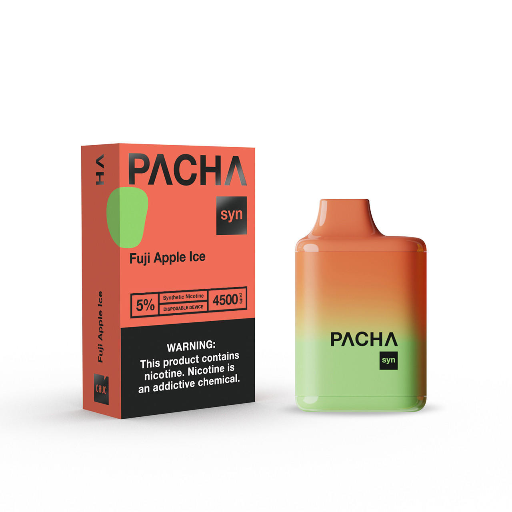
Image Source:https://www.google.com
Growing Concerns of Vape Waste
It’s clear that disposable vapes and environmental impacts are growing concerns. The disposal of these products increases plastic waste significantly and include hazardous elements such as lithium batteries as well as nicotine remains posing a toxicity hazard to the environment and humans. Many throwaway electronic cigarettes end up in dumps without recycling leading to potential leaching of harmful substances. What is more, their production process causes a large amount of greenhouse gas emissions, thus contributing to global warming. This continuous and extensive wastage requires more stringent regulations and heightened public awareness in order to counteract the harm caused by disposing of vapes.
Eco-Friendly Moves Within The Vaping Industry
I can say that some eco-friendly initiatives are gaining grounds in vaping for environmental concerns. Companies are increasingly designing recyclable and reusable vape products to reduce waste. Moreover, there have been introduction of refillable pods; biodegradable materials etc., all this aimed at reducing the size of an ecological footprint resulting from our industry. In addition, there is increasing effort towards improving recycling systems so that customers would dispose their used e-cigs rightfully. These efforts demonstrate that many players within the sector are adopting sustainable practices in order to balance supply with demand while minimizing environmental degradation impacts associated with consumerism.
Reference sources
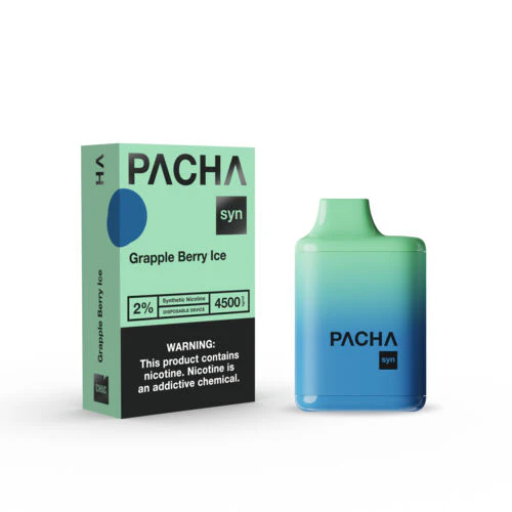
Image Source:https://www.google.com
1. Vaping360: Understanding Synthetic Nicotine in Disposable Vapes
Type: Online Article
Summary: This article from Vaping360 provides an in-depth look at synthetic nicotine used in disposable vapes. It explains what synthetic nicotine is, how it differs from traditional tobacco-derived nicotine, and the benefits it offers. The article also discusses the regulatory landscape and consumer preferences driving the adoption of synthetic nicotine in disposable vape products. This source is valuable for understanding the basics and advantages of synthetic nicotine vapes.
2. EcigaretteReviewed: Best Synthetic Nicotine Disposable Vapes
Type: Blog Post
Summary: EcigaretteReviewed offers a detailed blog post that highlights the best synthetic nicotine disposable vapes available on the market. The post includes product reviews, comparisons, and recommendations based on factors such as flavor quality, vapor production, and overall user experience. It also addresses common questions about synthetic nicotine and its safety, making it a useful guide for consumers looking to try synthetic nicotine disposables.
3. Journal of Electronic Materials: Evaluation of Synthetic Nicotine in E-Cigarettes
Type: Academic Journal Article
Summary: Published in the Journal of Electronic Materials, this academic article evaluates the use of synthetic nicotine in e-cigarettes, including disposable vapes. The study examines the chemical composition, safety profile, and consumer perceptions of synthetic nicotine compared to traditional nicotine. The findings provide scientific insights into the potential health implications and benefits of using synthetic nicotine, offering valuable information for researchers, healthcare professionals, and informed consumers.
Frequently Asked Questions (FAQs)
Q: So what are synthetic disposables?
A: Synthetic disposables are a type of e-cigarette that uses synthetic nicotine rather than tobacco-derived nicotine. They have become increasingly popular in recent years, with brands like puff bar and hyde being among the most well-known. These devices work by heating liquid until it forms vapor which is then inhaled by the user, much like regular cigarettes.
Q: What makes puff bars different from traditional e-cigarettes?
A: Puff bars differ from traditional e-cigarettes mainly through their use of synthetic nicotine. Traditional e-cigarettes use tobacco-derived nicotine, while puff bars and other similar devices utilize lab-made nicotine instead. This allows manufacturers that used tobacco-derived nicotine to bypass certain regulatory requirements imposed on them by the FDA’s Center for Tobacco Products.
Q: Are hyde e-cigarettes safer than regular cigarettes?
A: While hyde e-cigarettes and other vapor devices with synthetic nicotine may not contain some of the harmful combustible materials found in regular cigarettes, there is still uncertainty surrounding the health effects of using such products. The FDA has not declared these items safe alternatives to smoking, and all types of nicotine have potential health risks associated with them.
Q: Is tobacco free nicotine regulated by the FDA?
A: Yes, as of 2022, synthetic or “tobacco free” nicotine falls under regulation by FDA’s Center for Tobacco Products (CTP). A legislative change was enacted to close a loophole allowing synthetic-nicotine products to evade more rigorous oversight applied to conventional tobacco goods. Manufacturers must ensure their wares meet specific standards and could undergo CDER’s approval process.
Q: Can puff bars and hyde e-cigarettes help quit smoking?
A: Although some people might use puff bars or other e-cigarettes as an aid to quitting smoking, none of these products have been approved by FDA as methods for smoking cessation. Experts recommend trying FDA-approved methods and consulting healthcare professionals for guidance on quitting smoking.
Q: What flavors do synthetic disposable e-cigarettes come in?
A: There are many different flavors available for synthetic disposable e-cigarettes such as puff bars and hyde. Some of the most popular include watermelon, mint, tropical blends, and various dessert flavors. The use of these flavored vapor products has been controversial because it may attract young users who would otherwise not try them due to lack of interest or fear of addiction.
Q: How are manufacturers responding to new regulations on synthetic nicotine?
A: Manufacturers of puff bars and hyde e-cigarettes are adjusting their operations so as to comply with the Food and Drug Administration (FDA) guidelines on synthetic nicotine-based products. This could entail submitting applications for product review, adhering to labeling and marketing standards set by FDA, or even going through its approval process if making claims about health benefits or smoking cessation properties.
Q: What does regulating synthetic nicotine mean for the market?
A: Regulating synthetic nicotine has had a significant impact on the e-cigarette market. It means that any company wanting to sell products containing that type of nicotine will have to follow rules laid down by CTP which they wouldn’t have had to adhere to previously if using conventional tobacco-derived nicotine instead.
Recommend reading:Explore Freeton’s Premium Synthetic Disposable Vape Series


